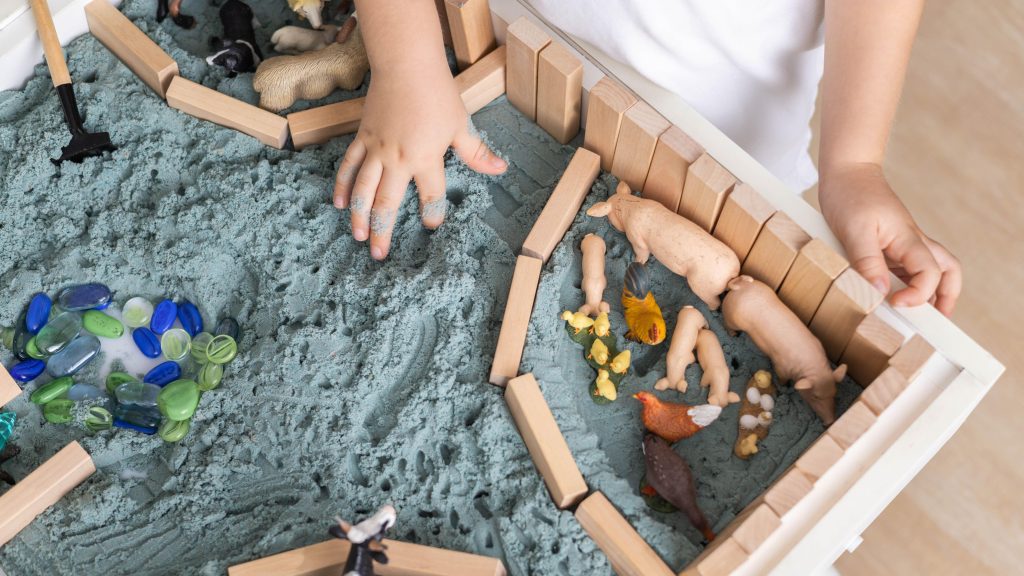
Sand clay is a fascinating material that combines the granular texture of sand with the moldable quality of clay or other binders. Many people first encounter it through a simple sand clay recipe designed for at-home crafts and keepsakes. Yet its potential goes well beyond DIY. Sand clay also has meaningful applications in education, retail, and the broader creative industry.
In this guide, we’ll explain what sand clay is, look at common recipes, compare it with kinetic sand and magic sand, and explore why businesses increasingly recognize its value.
Sand clay is a compound material made from natural sand mixed with a binder such as clay, flour, or glue. This unique combination creates a substance that is:
Unlike traditional clay, sand clay keeps the granular look and feel of sand. Once dried, it becomes durable enough to preserve handprints, footprints, or other small sculptures. That is why it is often used for keepsake crafts and classroom projects.
The most common entry point for families is the homemade sand clay recipe. A simple version includes:
Mixing these ingredients produces a moldable paste. Children can shape it into ornaments, handprints, or holiday crafts. Once dried, it hardens and can be painted or decorated.
While effective for small projects, these DIY recipes have limitations:
This is where commercial sand clay differs. Industrial formulations are engineered to be safe, non-toxic, and more reliable for bulk educational and creative use.
It is easy to confuse sand clay with other sensory materials, especially kinetic sand and magic sand. Here’s how they compare:
| Feature | Sand Clay | Kinetic Sand | Magic Sand |
|---|---|---|---|
| Composition | Sand + binder (clay/glue) | 98% sand + 2% polymer | Sand coated with hydrophobic material (or brand term) |
| Texture | Moldable, dries hard | Flowing, never dries | Water-repellent or sensory variant |
| Use | Keepsakes, crafts | Sensory play, endless reuse | Science experiments, creative play |
| Durability | Permanent once dried | Temporary, reusable | Temporary, reusable |
Some products are marketed as “Kinetic Sand Clay“, but these typically behave like kinetic sand rather than true clay. They flow, squish, and stretch but do not harden into a permanent shape.

While many families see sand clay as a craft material, it is increasingly valuable in B2B contexts:
By scaling beyond household crafts, sand clay becomes a versatile product for institutions seeking safe, creative, and educational materials.
Businesses often prefer commercial sand clay to home recipes for several reasons:
Every batch meets the same standard, making it reliable for group activities.
Certified non-toxic formulations are safe for children, an essential requirement for schools and public venues.
Bulk sand clay can be packaged with branded boxes, specific colors, or thematic kits.
Commercial-grade materials are designed to withstand frequent use in structured environments.
By addressing these factors, sand clay becomes more than a craft—it becomes a dependable tool for learning, play, and creative retail experiences.
Sand clay does not exist in isolation. It belongs to the broader family of sensory and creative sands that includes kinetic sand and magic sand. These materials share a common purpose:
Whereas kinetic sand emphasizes flow and reusability, and magic sand highlights water-resistant science fun, sand clay’s strength is in creating lasting keepsakes. Together, they give schools, retailers, and creative venues a variety of options for engaging activities.
The demand for sensory materials continues to grow. Key trends include:
As part of this trend, sand clay will remain relevant for both small crafts and large-scale creative projects.
Sand clay is more than a homemade craft material. While a sand clay recipe offers families a fun activity, the material’s real value emerges in education, retail, and creative industries. Its ability to combine sensory play with lasting creations makes it distinct from kinetic sand and magic sand.
For schools, retailers, and entertainment venues, choosing commercial sand clay ensures safety, consistency, and scalability. Alongside kinetic sand, it forms part of a growing market of sensory materials that inspire creativity and learning.
For any questions or quotes about our Sensory Sands!